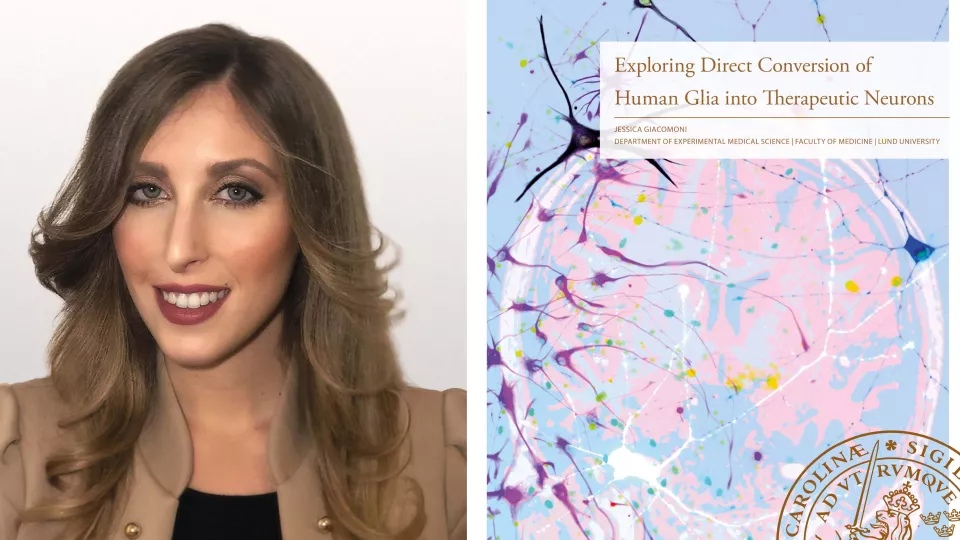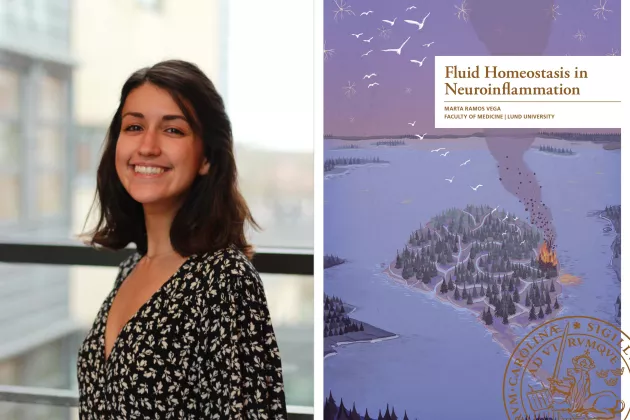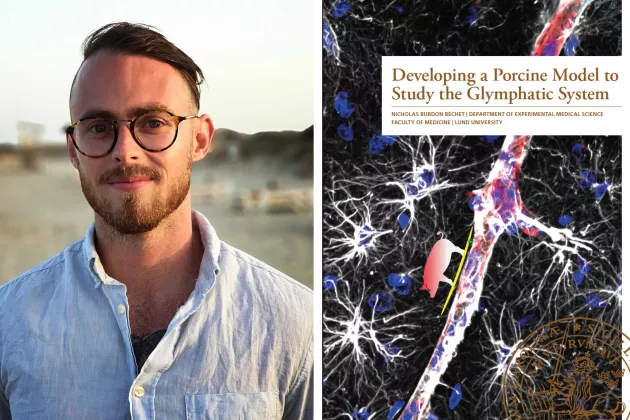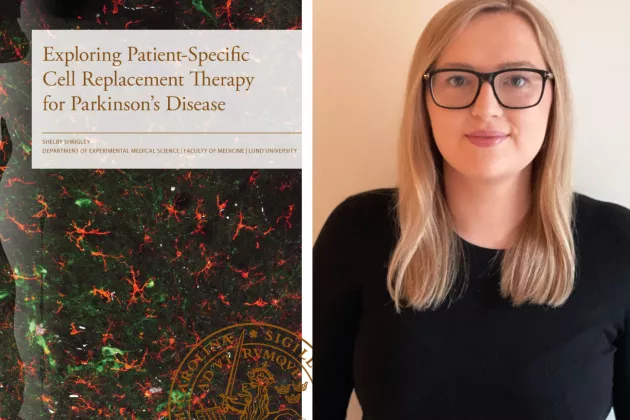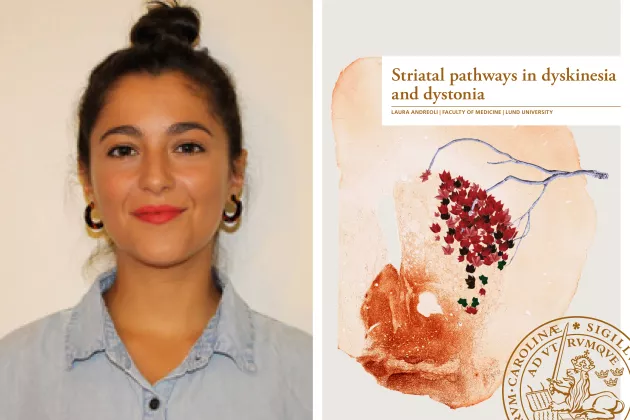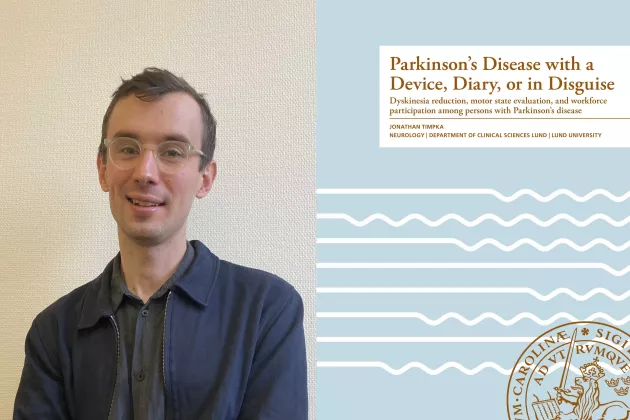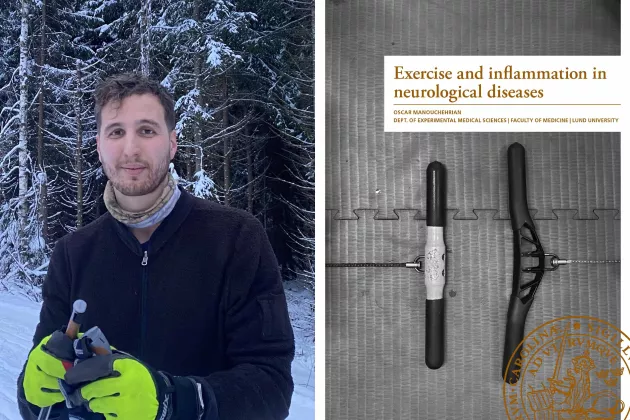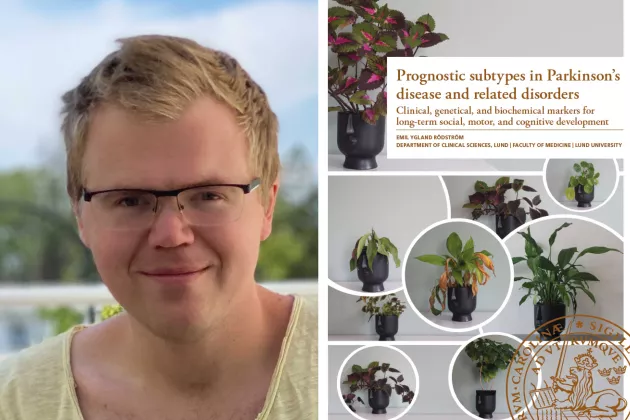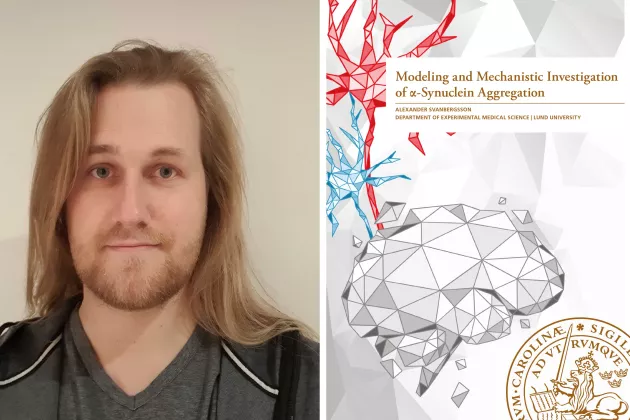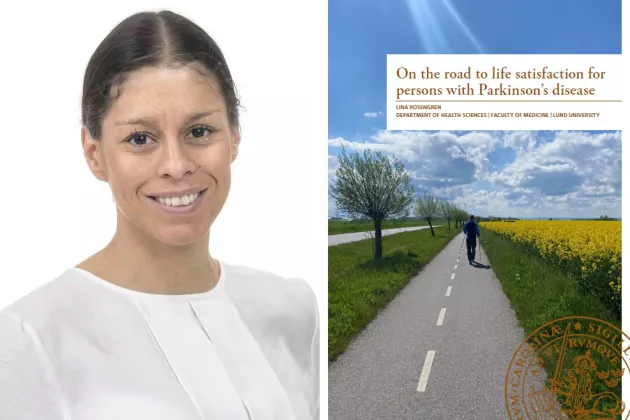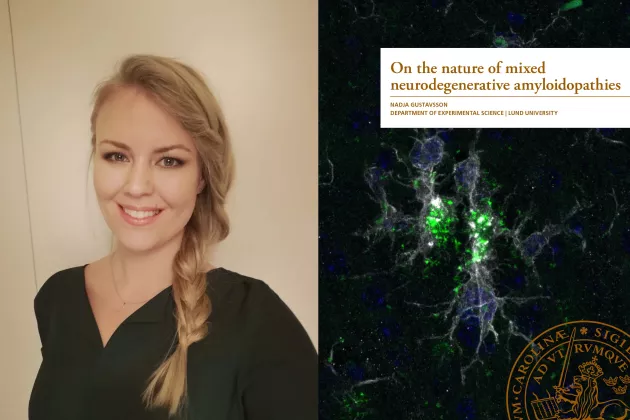Tell us about your research!
“The pioneering work conducted here in Lund in the 80´s using fetal dopamine neurons for transplantation in Parkinson´s disease has been fascinating and provides support for the concept of restoring dopamine release to improving patient’s motor symptoms. Current efforts are now focusing on bringing to the clinic neurons derived from pluripotent stem cells using a protocol that has been developed in the group where I performed my thesis work. However, exogenous sources for cell transplantation have the limitation of requiring initial immunosuppressive treatments that could lead to other medical risks. Moving forward, restorative brain therapies could be performed using endogenous cell sources. Therefore, my project has been to explore the direct conversion of human glial cells into neurons which, if performed inside the living brain, leads to an in vivo neuronal replacement, as an alternative to cell transplantation. This can be achieved by targeting existing glial cells and reprogramming them directly into specific neurons by viral vector-mediated gene transfer, without passing through an intermediate pluripotent stage.
My contribution has been to establish cell culture models to study the direct reprogramming of human glial cells into functional neurons and how to improve the targeting of specific glial cells for future direct conversion applications inside the living brain. In my project, I have identified the optimal factor combinations to generate both dopaminergic neurons and GABAergic interneurons and assessed their molecular and electrophysiological properties. I have also used brain slice cultures to demonstrate that selective infection of human glia transplanted in the rodent brain can be achieved by engineering the capsid surface of adeno-associated viruses. In the future, there may not be the need to open up the brain, if specifically designed viral vectors of serotypes able to cross the blood-brain barrier can be administered systemically through a regular intravenous injection. Our next goal is to prove conversion inside the brain and restore motor function in a pre-clinical humanized-xenograft rat model of Parkinson´s disease.”
Why is your project important?
“Much research remains before my findings can be transferred to the clinic. It is a promising proof of concept of what may be feasible in the future. If my findings can be translated into clinical practice, it may offer patients a new possible treatment. However, it is important to take into perspective that there is work left to develop this into a safe method; we are talking about years of research.”
Can you tell us more about the cover of your thesis?
“I have used an MRI scan of my own brain as a basis, taken with the 7 Tesla Facility in Lund University. Then, I added some artistically modified microscope pictures of the glial cells and converted neurons that I worked with, representing the direct conversion process inside the brain. Altogether, it looks like a contemporary-pop art cover, I think.”
How did you end up at MultiPark?
“I was already working with adult stem cells as a master student in Italy when I became curious about the application of pluripotent stem cells for regenerative medicine. This curiosity brought me to Sweden and I joined Malin Parmar’s group for three months during the summer of 2017. I liked the research team from the beginning, but there was no available position at that time. Later, I returned for a six-month human biology scholarship, whereafter Malin offered me my Ph.D. project.”
What did you like the most during your thesis work at MultiPark?
“Both Stem Cell Center and MultiPark offer great working environments with amazing infrastructures to carry out research. It is an ideal place for a researcher, as there are plenty of opportunities for social interactions and professional development. For example, I enjoyed the graduate school lunch seminars arranged by MultiPark and their travel grants have facilitated for me to visit international conferences. It is inspiring to listen to both local and international scientific presenters which is something I think both Multipark and SCC promote with seminars of invited speakers.”
What have been the most challenging during your Ph.D.?
“Well, things do not always go as you plan (rather a rule than an exception as a researcher). Sometimes it is hard to embrace failure, although I believe it is an opportunity to reflect upon what went wrong and gain knowledge and strength by not giving up. Still, the pandemic was hard to predict, and it came to many of us with delays in the research processes and slowness as it made it impossible to travel for a while. I am grateful that I could visit at least one international conference in the US before I defend.”
And the most rewarding?
“Every small discovery is a reward in itself. In addition, being part of the Developmental and Regenerative Neurobiology research group has allowed me to see the bigger picture of what I am doing. My project is about pre-clinical work, but our research team is involved in the upcoming in-human stem cell clinical trial (STEM-PD) and active in industry collaborations. That process has been exciting to follow from the inside of our group. Getting in touch with patients and meeting the people in need of what I have been working with is motivating.”
What are you most proud of?
“Of course, it is a great moment to accomplish a research education. I think I have grown a lot to become more structured in my work. Apart from that, I am also proud of all the great people that I met over the years; succeeding with research is a team effort.”
What do you like to do when you are not at work?
“I am a food enthusiast and an animal lover. It is not by chance that I found a chef as a partner, and we have more animals than I can count. My house is filled with lizards, gerbils, fish, a snake and a cat.”
What advice do you want to give to new Ph.D. students?
“How much time do we have? :P
To begin with, I think choosing the right subject and the right team is essential. Doing a Ph.D. is a big commitment; being curious about the project facilitates the heaviest periods. Also, having an honest and open communication with your supervisor is key to getting the proper support during these periods of struggle. The whole team and working environment are important to consider before deciding on a Ph.D project.
Then, once you start this journey, take your time to read the literature and do not rush on the experimental design before you have found the unsolved biological questions in your field. Inform yourself about the educational requirements early on, and if you can get your first authorship close to completion before the halftime, it is a great stress reliever. That gives you space to invest the second half of your Ph.D. studies on long-term goals and potentially initiate projects with higher risk.
My last piece of advice, do not forget to have fun and enjoy the bumpy ride!”
What happens after your defence?
“My project is too interesting! I have not been able to wrap all subprojects up before I defend. So, I would like to stay in the lab for a couple of extra months to finish some projects. After that, I will see. I am open both to academia and to other job opportunities when they come. Thanks to the MentLife program, I have gained insights into how to take the leap from academia to industry if I would like.”


